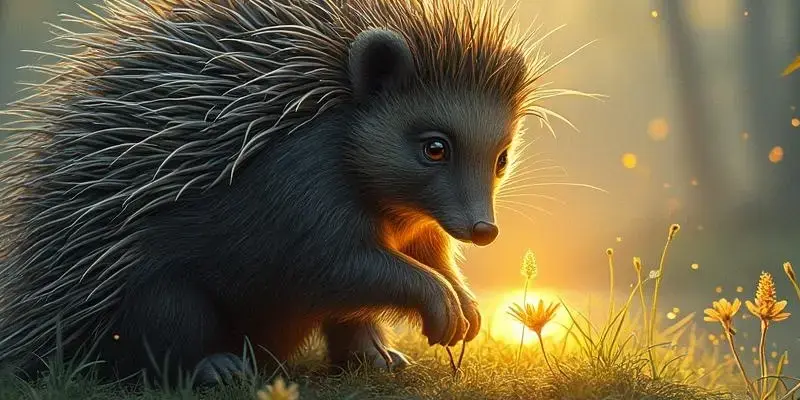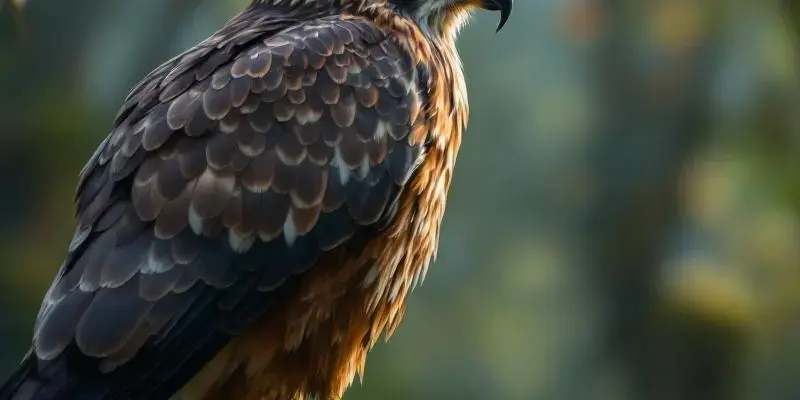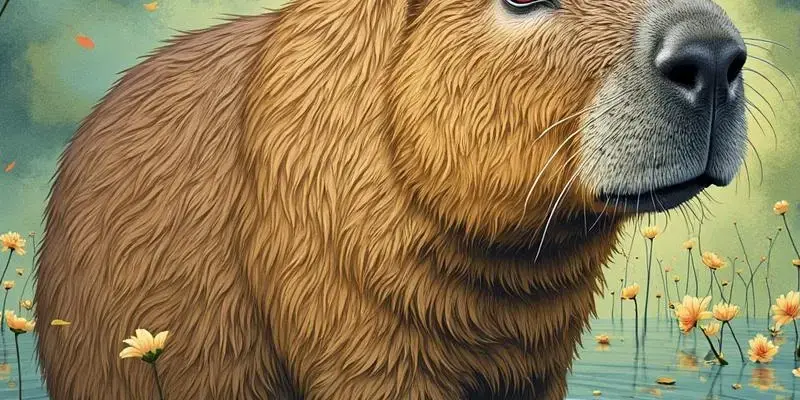Porcupine spiritual meaning

Porcupines carry profound spiritual significance as protectors of boundaries and symbols of authentic self-defense in various cultural traditions. Their distinctive quills represent not just physical protection but also emotional boundaries, teaching us to shield ourselves from harm while maintaining our inner innocence and joy.
Key Takeaways
- Porcupines symbolize healthy emotional boundaries and the release of guilt and shame
- In Native American traditions, porcupines are seen as spiritual protectors and healers
- Their ability to anticipate threats represents wisdom and foresight in spiritual contexts
- Porcupines teach the balance between self-protection and openness to others
- As spirit guides, they help individuals recognize when defense mechanisms become excessive
The Sacred Defense: Core Porcupine Symbolism
At the heart of porcupine symbolism lies a powerful lesson about protective boundaries. Unlike aggressive animals, porcupines don’t attack—they defend. Their quills lie flat when they’re at ease, rising only when they feel threatened, perfectly mirroring healthy emotional boundaries in human experience.
Porcupines offer spiritual guidance about releasing guilt and shame while reclaiming the childhood innocence many of us leave behind. They teach us that authentic protection doesn’t require aggression but rather a clear sense of self-worth and boundaries. This defensive wisdom helps us process and release old emotional “barbs” that may have lodged in our psyche from past hurts.
The porcupine’s natural state—peaceful until threatened—reminds us to maintain trust in our innate protective abilities. Their teaching encourages us to find joy in small things while maintaining the ability to protect our emotional well-being when necessary.
Native American Porcupine Medicine
Across Native American traditions, the porcupine holds sacred significance as both protector and healer. In Navajo culture, the porcupine (Dahsáni) serves as a protection symbol for the Hashtl’ishnii (Mud People Clan) and plays an important role in winter healing ceremonies conducted by medicine men.
The Navajo consider porcupines to be guardians of Dibé Nitsaa (Mount Hesperus) and protectors of various Holy People. Their respect for these creatures is reflected in the traditional taboo: “Do not kill porcupines or you will get nosebleeds.” The modern Navajo Zoo houses two notable porcupines, Spike and Barb, each weighing 25-30 pounds.
Different tribes attribute varied spiritual qualities to the porcupine:
- Hopi people view porcupines as emblems of modesty and humility
- Arapaho tradition holds that porcupines serve as liaisons to the Spirit realm for warriors
- Many tribes consider encountering a porcupine a lucky omen for hunters
- In Innu tradition, Kakuapeu serves as the Master of the Porcupine
Wisdom and Foresight: The Seer’s Animal
The porcupine’s sharp quills and exceptional night vision symbolize clear perception and intuition. Their ability to detect and prepare for threats before they materialize represents spiritual foresight—the capacity to anticipate challenges and implement protective measures before harm occurs.
Despite their intimidating appearance, porcupines are naturally timid and peaceful creatures, preferring solitude to confrontation. This solitary nature reflects the spiritual qualities of self-reliance and independence in decision-making. They teach us to be aware of our surroundings and preempt potential obstacles rather than reacting after problems arise.
I’ve observed that porcupines, like hedgehogs with their spiritual wisdom, demonstrate that true insight often involves preparing for challenges rather than simply responding to them. Their quiet vigilance offers a template for developing intuitive awareness in our daily lives.
Boundaries and Protection Across Cultures
The porcupine’s defensive capabilities offer universal lessons about healthy boundaries. These creatures warn against both extremes: becoming oversensitive to criticism on one hand, or failing to protect ourselves from genuine harm on the other. They teach the delicate balance between self-protection and remaining open to meaningful connection.
An important spiritual lesson from the porcupine involves recognizing when our defense mechanisms work overtime, potentially isolating us from positive experiences and relationships. Just as importantly, they caution against using “barbed sentences” that might harm others—reminding us that defensive reactions should protect rather than wound.
Across diverse spiritual traditions, porcupines symbolize the warding off of negative energies. They provide tools for metaphysical defense, teaching practitioners to establish spiritual shields that reflect harmful influences without necessarily engaging with them directly.
African Cultural Significance
In African traditions, particularly among the Ashanti people of Ghana, the porcupine (kotoko) symbolizes calm strength and resilience. The juxtaposition of sharp quills with the animal’s naturally peaceful demeanor represents ideal leadership qualities—the ability to defend when necessary while maintaining tranquility in normal circumstances.
The porcupine holds such cultural significance for the Ashanti that it became integrated into their identity. Similarly, in the Cameroon Grassfields region, porcupine quills represent political and spiritual authority. Leaders historically displayed these quills as symbols of their power and connection to protective spiritual forces.
These African interpretations emphasize that true strength lies not in aggression but in the capacity to maintain boundaries while pursuing peaceful existence—a teaching that transcends cultural boundaries and speaks to universal human needs.
Hindu and South Asian Symbolism
In Hindu traditions, particularly within the epic Mahabharata, the porcupine appears in powerful battle metaphors. Warriors covered in arrows are described as resembling porcupines with their quills, with Drona’s son specifically depicted using this vivid comparison to illustrate the extent of his wounds.
Ayurvedic texts classify porcupines among burrowing creatures with specific dietary properties. The Baudhayana and Gautama Dharmasutras include porcupines in their dietary classifications, while other texts note the medicinal properties of porcupine meat juices for treating poison.
The Charaka Samhita, a foundational Ayurvedic text, places porcupines in a specific category of burrowing animals, with particular attention to food combination warnings. These classifications reflect the animal’s unique position in traditional Hindu understanding of the natural world and its medicinal applications.
Celtic and European Folklore
While less prominent than in other traditions, porcupines make distinctive appearances in European folklore. Irish folktales feature a giant porcupine with enormous iron quills, often depicted as a punitive figure that would move into the orchards of farmers who missed Sunday service.
These European tales often highlight the porcupine’s unique fruit-gathering behavior—rolling around to collect fruit on their quills. This characteristic became symbolic of the natural consequences of actions, suggesting that what we “pick up” in life becomes attached to us and may be difficult to remove.
Though limited in European mythology compared to other animals, the porcupine’s presence in these stories emphasizes its universal symbolism of protection and the natural consequences that follow when boundaries are crossed.
Dream Interpretation and Inner Meanings
Dreaming of porcupines often carries significant messages about your emotional state and boundaries. Such dreams frequently signal a need to guard against psychological or emotional harm, particularly if the porcupine in the dream has its quills raised.
Different porcupine dream scenarios may indicate:
- A porcupine with flat quills suggests a period of openness and receptivity
- Being injured by quills might point to overactive defenses harming relationships
- Porcupines in threatening positions could represent intimidation tactics in your waking life
- A peaceful interaction indicates healthy boundaries and self-protection
The contrast between dreams of defensive porcupines and those showing calm interactions reflects our internal balance between protection and vulnerability. These dreams often emerge during periods when we’re reevaluating personal boundaries or processing past hurts.
Physical Characteristics as Spiritual Metaphors
The porcupine’s physical attributes provide rich metaphors for spiritual development. Their tens of thousands of quills represent the multiple defense mechanisms we develop throughout life, while the transformation from flat quills to an erect defensive posture mirrors our own emotional shifts when threatened.
The barbed nature of porcupine quills, which makes them difficult to remove once embedded, symbolizes the lasting consequences of both harm done to us and harm we might inflict on others. Their nocturnal habits represent intuitive insight—the ability to navigate darkness with confidence.
Perhaps most significantly, the porcupine’s solitary behavior reflects the spiritual journey toward inner strength and self-reliance. They teach us that true security comes not from external validation but from a deep connection to our own inner resources and boundaries.
Porcupine as Totem and Spirit Guide
Those who identify with the porcupine as a totem or spirit guide often share certain distinctive traits. They may be particularly sensitive to criticism while simultaneously holding high standards for others—a reflection of the porcupine’s defensive nature coupled with its solitary lifestyle.
Porcupine people frequently carry the influence of past wounds on their present behavior, sometimes maintaining defenses long after the original threat has passed. They often experience a strong desire for “salt”—whether literal or metaphorical—requiring awareness and moderation of intense cravings.
The porcupine spirit guide teaches its followers to recognize the connection between hypersensitivity and harsh judgment of others. It guides them toward finding balance—maintaining healthy boundaries without isolation, protecting themselves without wounding others in the process.
Complete Symbolic Meanings Reference
The porcupine embodies a comprehensive set of symbolic meanings that apply across spiritual contexts. These include:
- Action and Power: Decisive defensive responses when threatened
- Bravery: Standing ground despite being outnumbered
- Boundaries: Clear delineation between self and others
- Precaution: Anticipating problems before they arise
- Love and Devotion: Gentle nature beneath the protective exterior
- Curiosity and Kindness: Core aspects beneath defensive mechanisms
- Innocence and Inner Child: Connection to youthful wonder
- Protection an
The article explores the spiritual significance of porcupines across various cultural traditions. Porcupines symbolize healthy boundary-setting and authentic self-protection without aggression. Their defensive quills represent emotional boundaries that protect one’s inner self while maintaining openness to genuine connection.Native American traditions view porcupines as sacred protectors and healers, while African cultures see them as symbols of calm strength. Their ability to anticipate threats represents wisdom and foresight, teaching the balance between self-protection and vulnerability. As spirit guides, porcupines help individuals recognize when defense mechanisms become excessive.
Key Aspect Spiritual Meaning Quills Healthy emotional boundaries; protection without aggression Cultural Significance Protectors (Native American); symbols of authority (African); battle metaphors (Hindu) Behavioral Lessons Balance between self-protection and openness; releasing guilt and shame Spiritual Guidance Recognizing when defenses become harmful; maintaining inner joy while staying protected














